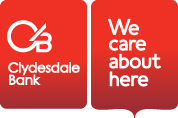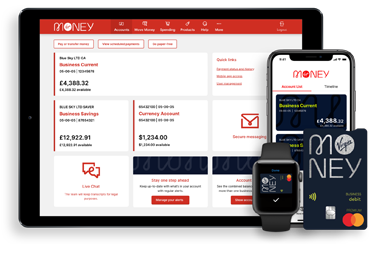Five ideas to grow your business
< back to all business news articles
27/04/2018
Once your business is up and running, it’s important not to rest on your laurels. Successful business owners are always looking at ways they can grow their business and maximise their profits.

Growing your business isn’t just about gaining new customers, although it’s still something to continually focus on. Improving what you offer to your existing customers is just as important, because the better the customer experience, the more chance you have of turning those customers into fans for your business – and there’s no better marketing tool than word of mouth.
1. Focus on existing customers
One of the easiest ways to achieve an increase in sales is to sell more to your existing customers. As a mature business, you may be less interested in chasing new customers and more interested in earning additional money from your existing ones. It’s certainly easier to upsell extra products or services to your current customer base than to find new shoppers.
Your current customers probably:
- Already trust you
- Are already comfortable doing business with you
- Have invested in systems or paperwork to do business with you.
- Favour existing relationships over riskier new ones
Make use of your customer database
Maintain regular contact through newsletters (physical or email), phone calls, personal visits, or attendance at conferences and trade fairs. Advise them of special offers or tell them about any products and services they have not previously bought.
Anticipate their needs
Determine when customers may have run out of product or need to re-order from you, and contact them just before this happens. By doing this, you’re not only predicting customer needs and making more sales, but you’re also generating goodwill.
Offer new ways to buy
Consider options such as online ordering through your website or through reciprocal links to other websites. You can also update your payment options, to make paying easier. For example, if you run a service-based business, consider setting up a mobile payment option that your customers can make use of on-the-spot.
Develop a customer loyalty program
Unlike promotions that anyone can enjoy, loyalty programs are ongoing campaigns designed to keep your best customers engaged. A well-designed loyalty program can help make your business the first choice for customers. Point cards and free perks are a proven way to increase customer engagement and improve brand loyalty.
2. Find new customers
If you have an existing customer base, then you’ve definitely got a demand for your product or service. And if you have demand, you can get new customers.
Build a profile of your ideal customer. If you already have some regular customers, it should be easy to build a customer profile. If not, base your customer profile on your business plan research while taking into account your competitors’ customers.
Try to be as specific as you can. For example, instead of targeting ‘female professionals’ you’re better to describe them as ‘female accountants aged 25-40 who live within 30km of our business.’
It’s then easier to think about where they might be, what they’re listening to, or what they’re doing when you run your promotion.
Grow by exporting
Exporting is a great way to help your business expand and grow, while increasing profits. It can also improve your competitiveness by exposing you and your staff to new ideas and demands from overseas customers. Plus, there’s the thrill of knowing that your business can compete against the best in the world – and succeed.
3. Develop new products and services
The first step is to identify any new products or services that a) complement your existing range and b) your customers have indicated they’d be interested in buying from you. Any new product needs to complement what you already sell, not be a substitute, otherwise there is no growth in sales.
Diversifying into new products is a medium to high risk growth strategy because new products and services cost time and money to source or develop. Markets are dynamic and constantly evolving, so no business can afford to stand still. No matter how excellent your products or services, they have a finite lifespan, so they have to be developed or replaced if you’re to continue growing your business.
New products and services are the hallmarks of a go-ahead business.
4. Diversify – widen your scope
Most businesses try to do one thing exceptionally well. If you’re running a restaurant, for example, you might be putting most of your emphasis on evening bookings when you could be making the most out of daytime or weekend customers.
One way to enhance your business is to look for a secondary market. For example, the restaurant owner could offer café-style fare during the day and high-end fare in the evening. They could also approach local businesses for catering contracts, or offer discounts for bulk lunch orders. Regardless of the tactic you choose, the end goal is to make your offering more appealing to your target customers.
The most important point to remember is to take your time – change is great, but always consider the implications of new ideas before diving into a new strategy. If you need to, have a brainstorming session with staff and advisors before making big decisions.
Your regular customers are also a great source of information and most will be happy to give you feedback.
5. Enhance your operations
Do you have the internal resources you need? All businesses need infrastructure, and what you have in place today may not meet your future needs as you grow. Your capacity needs to change and adapt as your enterprise expands. Three key areas to assess are:
- Systems – having the technology that’s right for your business is essential for growth and success. If this isn’t your personal area of expertise, you may want to consult an information technology professional.
- Staff – building a supportive team will be a priority as your business grows. You’ll have less time to focus on day-to-day tasks, as you devote more time to strategic decision-making. As a result, you’ll need to delegate some of your current responsibilities to people who understand the objectives of your business and the clients you serve.
- Processes – the processes and structures that worked before may have to be adapted or developed to meet your evolving needs.
Summary
It’s also important to remember that 80% of your income comes from 20% of your customers. This insight has clear implications for your customer management. It follows that you should spend 80% of your time on these top 20% of your customers because they produce most of your sales. These are the customers you need to:
- Reward with customer loyalty programs
- Keep in touch via social media and e-newsletters
- Build long term relationships with
- Ask for customer referrals – you want more customers just like them
POSTED IN: Growth
SHARE
Related Articles
You can find impartial information and guidance on money matters on the “MoneyHelper” website.
Clydesdale Bank is covered by the Financial Services Compensation Scheme (FSCS), Find out more.


